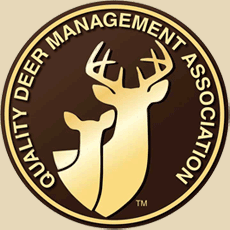With the opening of turkey season approaching for the rest of South Carolina, many hunters are anxiously anticipating the thrill of gobbling and the hunt that follows.
Many hunters are hoping to fill their first tag on the opening morning, and in many years this is possible because of the lack of pressure the birds have received. Here are four things to keep in mind when hunting early season turkeys.
1. Set up: The initial set up on early season birds can be the deal breaker or deal maker for many hunts. The birds aren’t used to seeing humans walking around in the dark. And finding the birds, or better knowing where to birds are roosting ca put the odds significantly in your favor come opening morning. I like to set up inside 100 yards of roosted turkeys in the early season. Any closer and I run the risk of spooking them from the roost. That being said, if I am confident that I know where the birds are roosting, I will get in there well before daylight and set up. I know a lot of hunters like to get there at dawn and wait for the tree gobble before moving in, while this does work, in the early season I should know where the gobblers are roosting and I will get into place quietly at least fifteen to thirty minutes before first light.
2. Forget the owl hoot and just listen: I cannot count the number of times I have hunted with others and we get everything set up and are waiting for the morning to unfold when they begin blowing on an owl hoot call or trying to imitate one with their voice. Only to alert the roosted turkeys of our exact location. When I get set up on birds, I never use a locator call to get the turkeys to gobble. In my experience this only educates the bird of your location. Rather, I sit and listen, allowing the morning to unfold naturally. As the morning gets light enough for me to shoot, or for just before the fly down time, I will send out a series of soft yelps – mimicking a hen just waking up. Ninety percent of the time this will elicit a gobble from a willing Tom. If I am in the right spot. It never hurts to just allow the morning to unfold naturally, owl hooting isn’t necessary in the early season.
3. Be Patient: Early season gobblers are actively in the breeding season. Hens are willing and gobblers are ready. As One turkey hunting legend put it, “if I don’t kill him before 9:00, I won’t kill him until after 1:00.” The reasoning is simple, hens will fly down feed for a few hours, breed and then go lay their egg for the day at their nest. During the active breeding season, hens will lay one egg per day until their clutch is complete. It is during this time that the gobblers are most vulnerable. They have been with the girls all morning, now the girls have gone to take care of housekeeping and the gobblers are alone. Late morning or early afternoon the gobblers are very vulnerable and can be killed with a lot of patience.
4. Be Mobile: While on the onset this may seem contradictory to the step above, it really isn’t. Turkeys will move throughout the day feeding, going to nest, and looking for hens. When the gobblers get “henned up” or are satisfied with their harem for the morning, being mobile can help you cross paths with these Toms.
Often this means being very mobile, if you can see the turkeys it helps to make a circle and get in front of them. If not you are relying on your knowledge of the land, and the movements of the birds to make a wide circle to get into position. In turkey success I have enjoyed, the have been killed after I moved not once but several times.
Following these four steps does not guarantee a long beard in your sights in the early season, but using these will increase your odds of seeing and having the opportunity to fill that first tag of the season.




